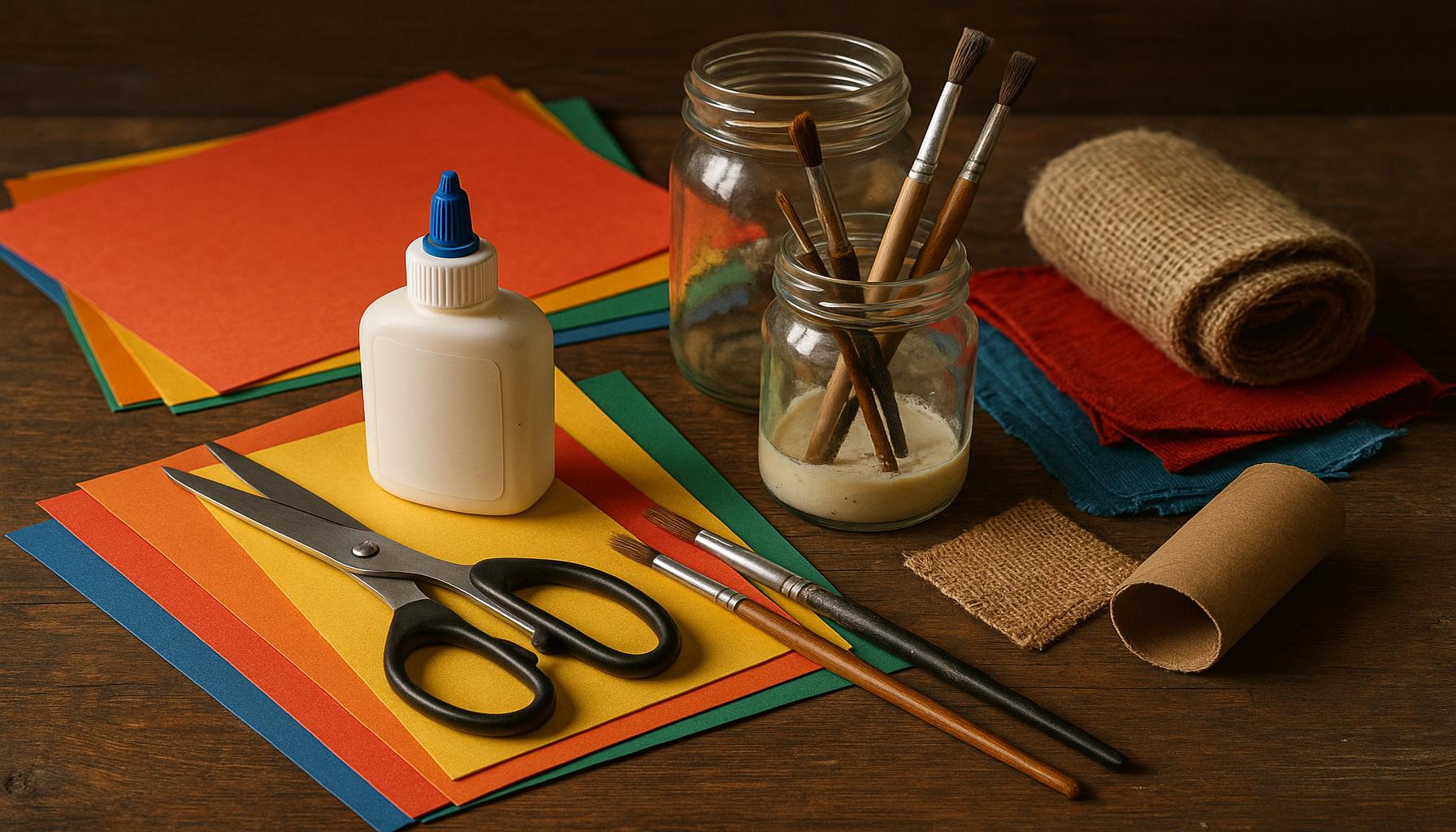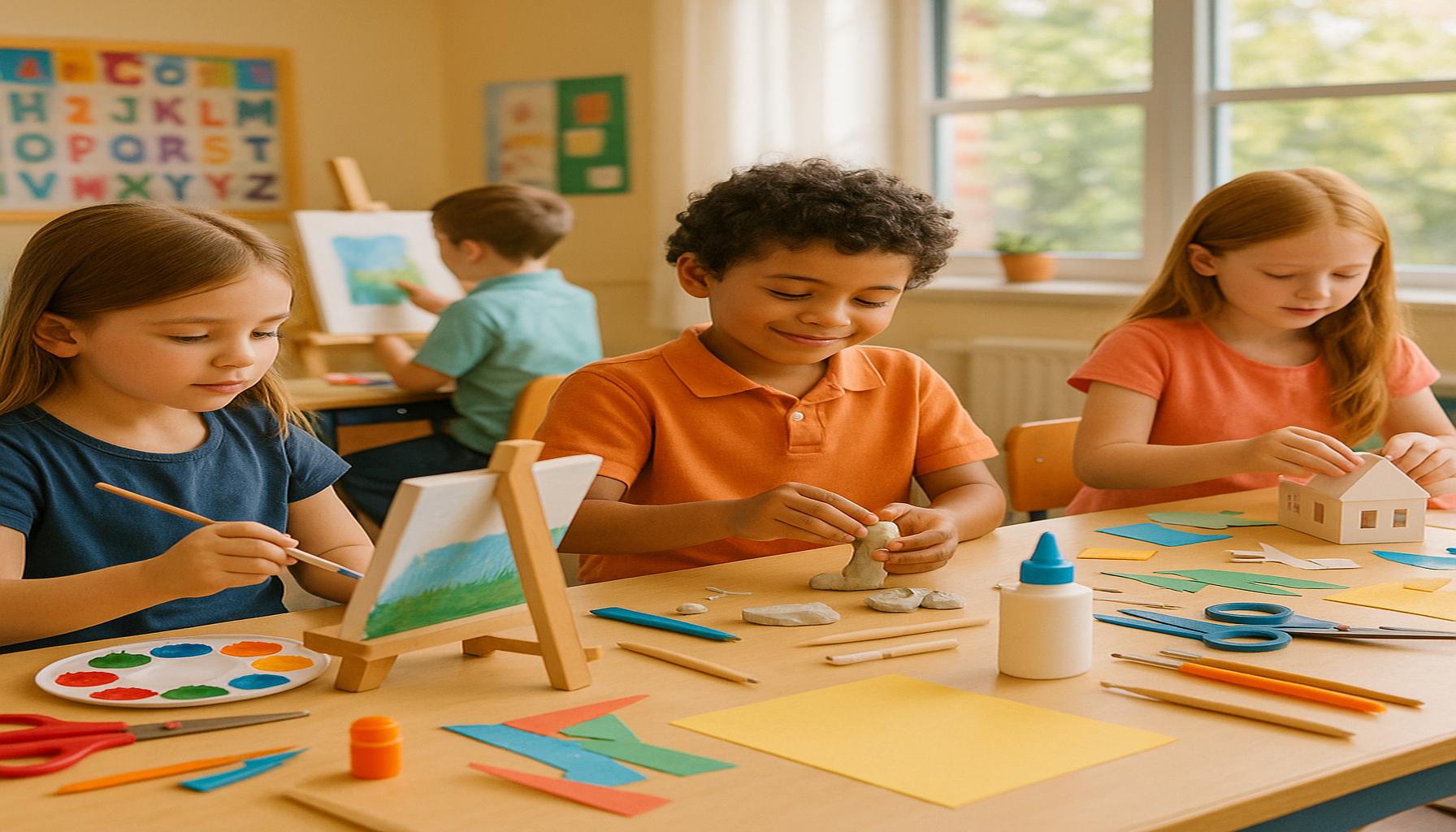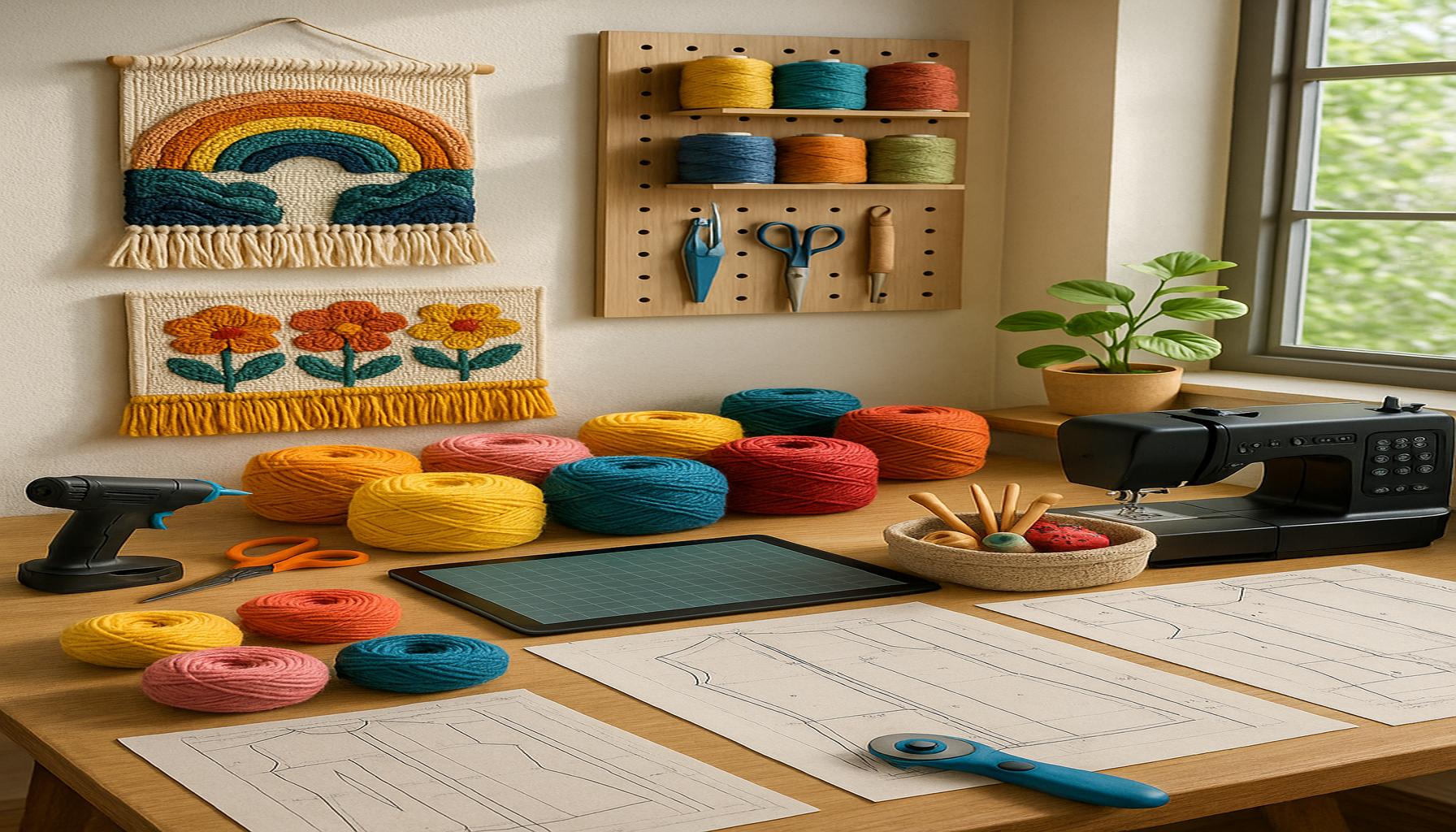Crafting and Sustainability: Projects that Promote Ecological Awareness
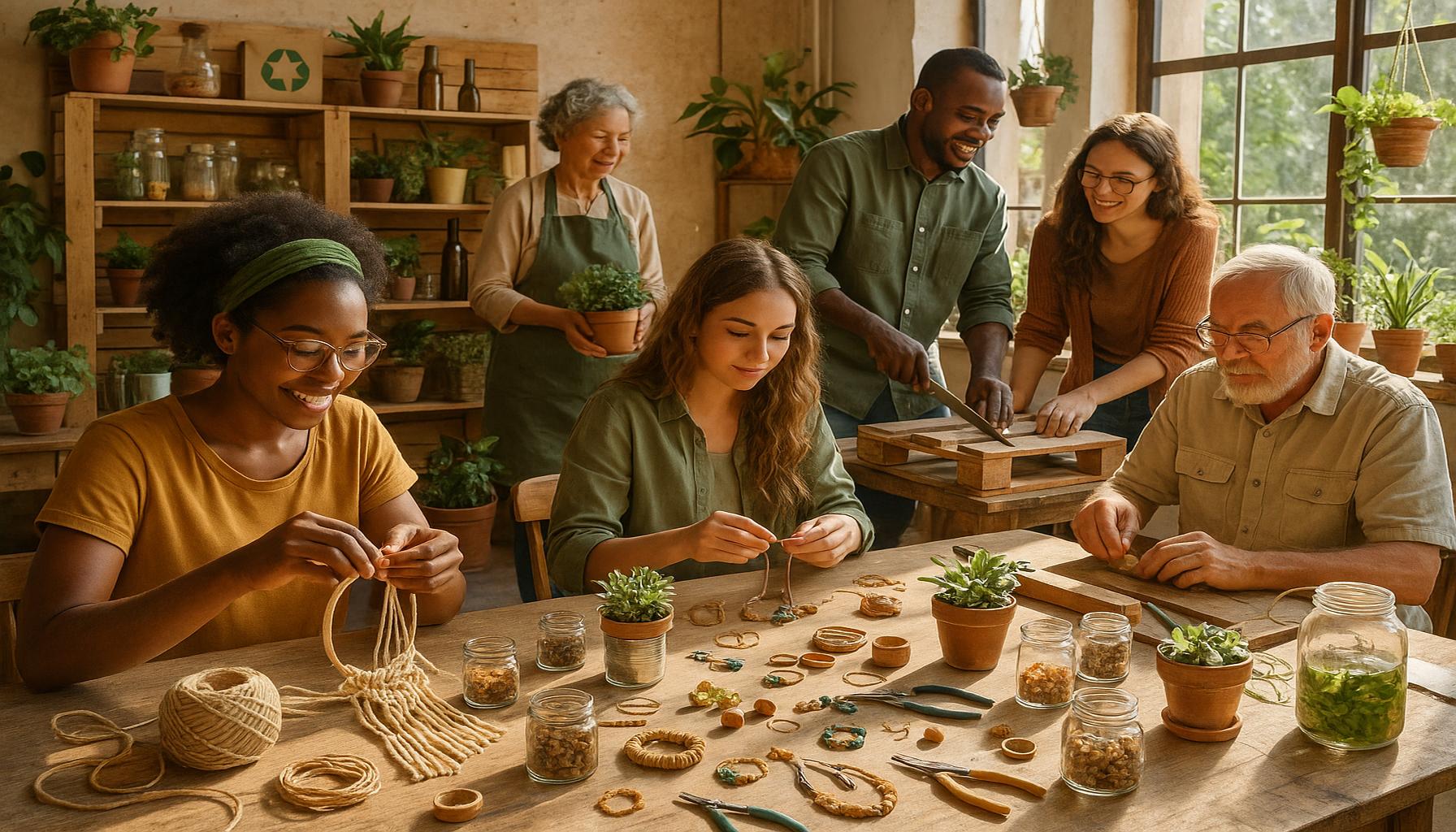
Understanding the Intersection of Crafting and Sustainability
Amid growing ecological challenges, the integration of crafting and sustainability serves as a catalyst for positive change. Artisans across the United States are leveraging their creativity not just to create aesthetically pleasing works, but also to positively impact the environment. This synthesis of creativity and environmental stewardship is important as it encourages a collective shift towards sustainable practices that can inspire individuals and communities alike.
Upcycled Furniture is one of the most popular trends in the crafting community. This practice takes discarded wood, old furniture, or even pallets and transforms them into bespoke pieces that tell a unique story. For example, an old wooden door can become a stunning dining table, while wine crates can be reimagined into elegant bar stools. These projects not only keep furniture out of landfills but also add personalized charm to homes, demonstrating that sustainable choices can be simply beautiful.
Additionally, the use of natural dyes is gaining traction among textile artists. Instead of relying on synthetic dyes that can leach harmful chemicals into waterways, makers are turning to plants and vegetables for inspiration. For instance, avocado pits can yield a soft pink hue, turmeric can create a vibrant yellow, and indigo leaves can impart deep blues. This method not only reduces the environmental footprint associated with textile production but also brings a delightful tactile experience to the crafting process, celebrating the use of natural resources.
Moreover, community gardens are blossoming in urban areas, serving as more than just a space to grow food. These gardens are a testament to how local communities can engage in eco-friendly practices while fostering social connections. Through collaboration, residents can cultivate various plants, share the harvest, and educate one another about sustainable gardening techniques. Such initiatives promote biodiversity in densely populated regions and underscore the importance of local agriculture in combating climate change.
Engaging in sustainable crafts transcends mere recreation; it is a reflection of individual and community values. As more people become aware of their environmental impact, their desire to lead a lifestyle that benefits both themselves and the planet increases. Exploring these projects can ignite a passion for ecological responsibility, paving the way for a new generation of mindful crafters. There is a world of potential in rethinking materials, repurposing resources, and reimagining the creative process.
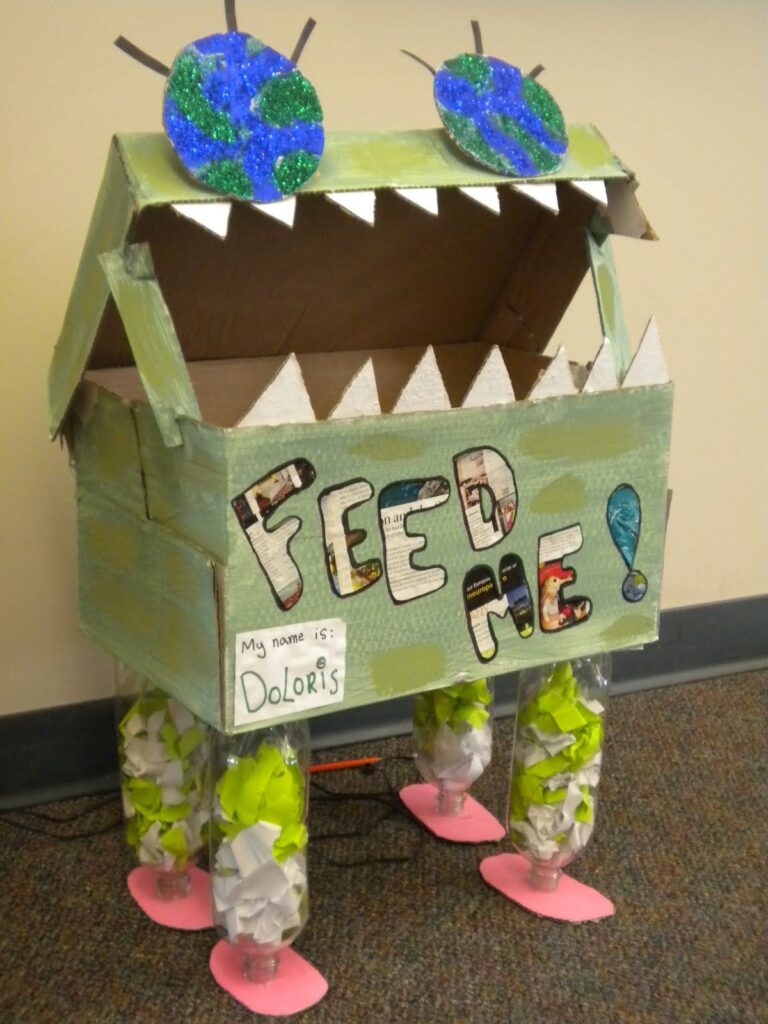
In the sections ahead, readers will discover a treasure trove of innovative projects and techniques. From how-tos on creating upcycled decor items to tips on sourcing natural dyes for fabric, expect to uncover inspiring stories and invaluable resources that promote crafting with a conscience. Each of these insights aims to nourish the creativity within and cultivate a profound sense of environmental stewardship.
DISCOVER MORE: Click here for eco-friendly gardening tips
Innovative Craft Projects that Foster Sustainability
In the realm of crafting, several visionary projects highlight the intersection of creativity and ecological awareness. These initiatives not only inspire individual artisans but also create ripples throughout communities, encouraging sustainable lifestyles. Let’s delve into some innovative crafting projects that exemplify this synthesis while fostering a profound connection to our environment.
Creative Ways to Manage Waste: Upcycling and Beyond
Upcycling has become synonymous with sustainability in crafting, allowing artisans to manage waste creatively. This method transforms everyday items that would otherwise fill landfills into functional, beautiful art. Craft enthusiasts are encouraged to explore endless possibilities with the following items:
- Glass Jars: Old jars, often seen as clutter, can be repurposed into chic storage solutions or charming lanterns.
- Fabric Scraps: Rather than discarding textile off-cuts, crafters turn them into quilts, patchwork bags, or even trendy accessories.
- Cardboard Boxes: When given a new life with paint and creativity, these boxes can be transformed into organizers or playful art pieces.
The beauty of upcycling lies in its potential to reduce waste while sparking creativity. Individuals are not only salvaging materials but also creating unique identity pieces that reflect their personal style.
Natural Materials: Back to Basics
The resurgence of using natural materials in crafting has ignited renewed interest in sustainability. Artisans are rediscovering time-honored techniques that honor the planet. For instance, woodworkers are sourcing reclaimed wood from old barns or shipping pallets, ensuring that their creations come with a history. The charm of aged wood offers a rich patina, which synthetic materials struggle to replicate.
Additionally, the crafting community is embracing biodegradable materials such as cotton, linen, and bamboo. These fibers decompose naturally, preventing the creation of microplastics that can plague our ecosystems. Using these materials not only supports sustainable practices but also reminds creators of their connection to the earth.
Crafting for a Cause: Community Engagement
Crafting can also serve as a powerful vehicle for social change. Many local artisans are collaborating with nonprofits, using their skills to address pressing environmental issues. Initiatives such as creating reusable shopping bags from donated fabrics can combat the problem of single-use plastics. Additionally, workshops focused on sustainable crafting practices are being held in schools and community centers, empowering future generations.
These projects not only highlight the significance of ecological mindfulness but also instill a sense of community purpose. By pooling resources and skills, participants are actively contributing to a healthier planet while also staying engaged in their local environments.
As we traverse the landscape of crafting and sustainability, it’s evident that the potential for creative impact is boundless. Each project serves to educate, inspire, and provoke thought about our environmental footprints, nudging both makers and consumers towards more conscientious choices.
| Advantage | Description |
|---|---|
| Promotes Ecological Awareness | Projects encourage individuals to understand their environmental impact and reduce waste. |
| Encourages Sustainable Practices | Crafting with sustainable materials fosters a culture that values eco-friendly choices. |
| Community Engagement | These projects often involve collaborative efforts that strengthen community bonds around sustainability. |
| Skill Development | Participants hone crafting skills, which can lead to personal expression and potential career opportunities in sustainable industries. |
Crafting and sustainability intersect beautifully, making a significant impact on ecological awareness. By engaging in joint efforts, individuals not only learn about their carbon footprints but also discover how to minimize their ecological effects through conscious crafting choices. As highlighted, the movement is not solely about personal benefits; it fosters stronger community ties through shared values and collaborative projects. Community gardening and upcycling events are prime examples where people come together and exchange ideas, creating an empowering collective spirit. Moreover, as crafting projects promote skill development, individuals gain valuable experience and knowledge that equip them for roles in the growing green economy. Ultimately, these initiatives open up pathways for innovative solutions to address sustainability challenges while nurturing creativity and community connections.
DIVE DEEPER: Click here to discover the evolution of music
Engaging with Nature: Eco-Friendly Crafting Techniques
A pivotal aspect of sustainable crafting is the engagement with natural processes and materials. As more artisans gravitate towards eco-friendly techniques, they foster not only personal creativity but also a broader awareness of environmental stewardship. These crafting methods emphasize respect for nature and encourage crafters to work in harmony with their surroundings.
Nature-Inspired Crafting: Permaculture Practices
Permaculture, typically associated with sustainable agriculture, has infiltrated the crafting sphere by inspiring projects that use materials directly from the environment. Artisans are now crafting items that reflect nature’s beauty through methods such as natural dyeing and plant carving. Crafters are discovering that, when using plant-based dyes, they can create vivid hues from sources like turmeric, avocado pits, and onion skins. This not only minimizes chemical waste but also celebrates the color spectrum found in the natural world.
Moreover, the art of plant carving—whether it’s utilizing fallen branches or dried plant stems—can produce unique bowls, utensils, and decorative arts. These projects not only leverage local resources but also honor the life cycles of plants, fostering a deeper connection to the ecosystems from which they draw inspiration.
Green Printing: Sustainable Art on Fabric
As the fashion industry faces intense scrutiny over its environmental impact, more crafters are turning to sustainable printing techniques to create their own unique clothing and accessories. Methods such as eco-solvent and water-based inks are gaining popularity as alternatives to harmful chemicals traditionally used in screen printing. Crafters can print vibrant designs on textiles, using materials sourced from sustainable producers, such as organic cotton or hemp.
This approach extends to a variety of projects, including upcycled clothing lines where old garments are revitalized with fresh designs. Such projects not only breathe new life into discarded textiles but also promote mindfulness in fashion consumption, urging consumers to consider the lifecycle of their clothing.
Educational Crafting: Workshops and Online Communities
As the movement towards sustainable crafting grows, so too does the formation of educational platforms that offer workshops and online resources. Workshops that focus on eco-friendly crafting methods are popping up in neighborhoods across America. These community-driven sessions allow individuals to learn while sharing their skills with neighbors, cementing a local culture that values sustainability.
Online platforms have also expanded access to these skills, with social media groups dedicated to sustainable crafting boasting tens of thousands of members. Participants share projects, innovative techniques, and sustainable tips, creating a collaborative learning environment that stretches across geographical boundaries. This digital networking underscores the notion that sustainability isn’t simply an individual pursuit; it is a collective journey toward a greener world.
The ripple effects of crafting with a conscientious approach are profound, especially as artists blend their personal styles with ecological considerations. By embracing techniques that emphasize environmental health, artisans become ambassadors for change. Each crafted piece carries a story, not just of craftsmanship but of commitment to the planet, inviting others to join the movement toward sustainability.
DIVE DEEPER: Click here to discover the evolution of music
Conclusion: A Movement Toward Eco-Conscious Crafting
As we’ve explored the intersection of crafting and sustainability, it becomes clear that this movement is not merely about creating; it is about cultivating a profound respect for our environment. Through innovative techniques such as natural dyeing, plant carving, and sustainable printing, crafters are transforming discarded or natural materials into meaningful art, while simultaneously raising awareness about ecological issues.
The rise of educational platforms, both in-person and online, emphasizes the importance of community engagement and the sharing of knowledge in this craft revolution. By participating in workshops, individuals not only hone their skills but also become advocates for sustainable practices in their neighborhoods. This collective effort fosters a culture of sustainability that can ripple through communities, promoting responsible consumption and resourcefulness.
Furthermore, the narrative woven into each crafted piece extends beyond aesthetics; it carries a commitment to ecological consciousness. By opting for eco-friendly materials and methods, these projects are intricately linked to the health of our planet. As hands-on creators and makers, we set forth a challenge: to not only craft with intention but to inspire others to consider the environmental impact of their choices.
In essence, engaging in sustainable crafting is a step toward greater ecological awareness. It is an invitation for everyone to rethink their relationship with materials and to embrace creativity as a powerful tool for change. As consumers and creators, we hold the potential to influence a greener future—one crafted piece at a time.
